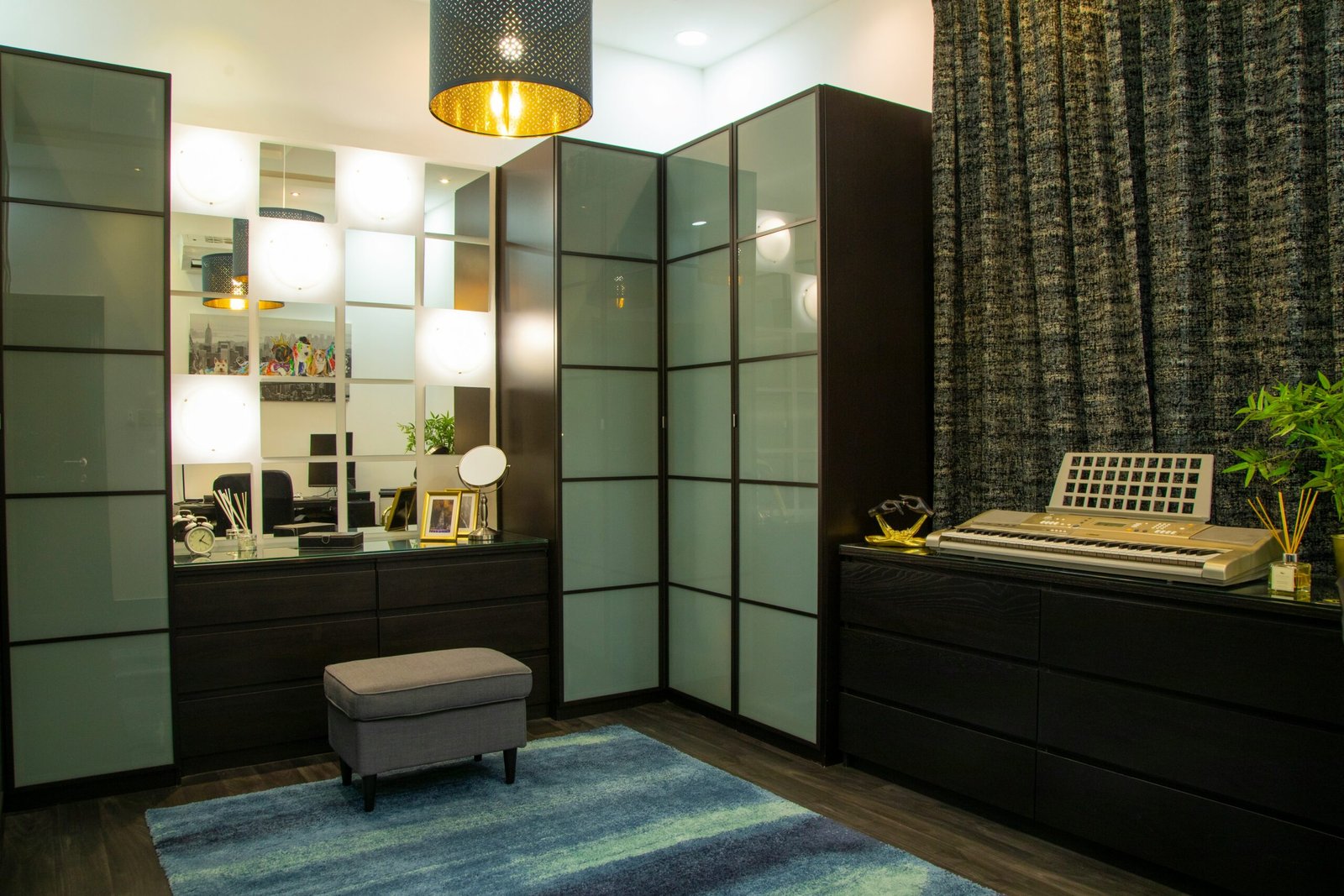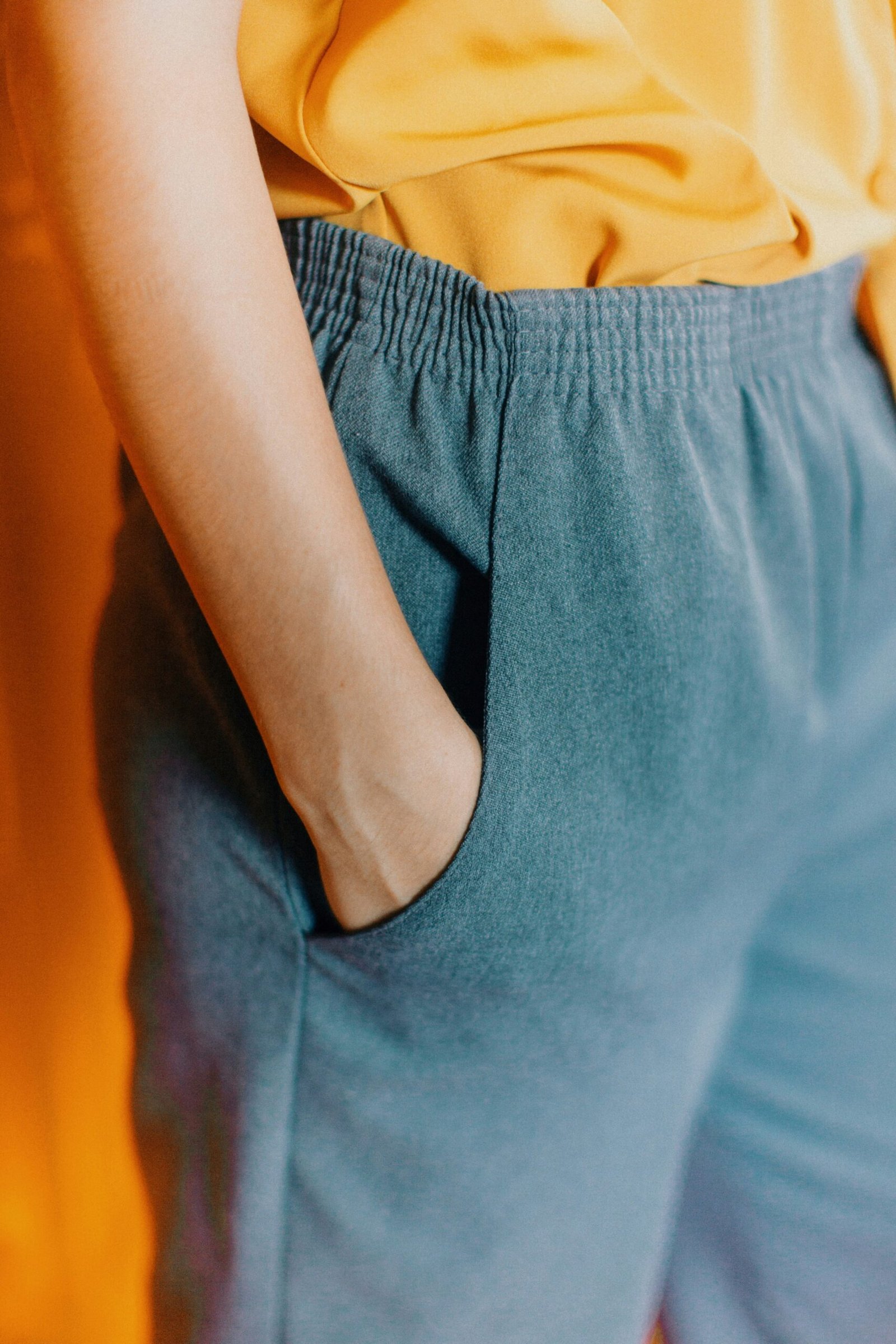Understanding Body Types
The concept of body types is essential in the realm of fashion and personal style. Traditionally, body types are classified into five main categories: hourglass, pear, apple, rectangle, and inverted triangle. Each of these types represents distinct silhouette characteristics, which can significantly influence how clothing fits and flatters an individual. The hourglass body type, known for having a defined waist with balanced bust and hip measurements, often benefits from styles that emphasize curves. Conversely, the pear body type features a narrower shoulder width compared to wider hips, making A-line skirts and tops with embellishments at the shoulder particularly appealing.
Understanding your body type begins with taking accurate measurements. This includes bust, waist, and hip measurements, which can guide you in identifying your category. The apple body type, which is characterized by broader shoulders with a fuller bust and waistline, may find that empire-waist dresses and V-neck tops create a more balanced look. Similarly, those with a rectangle body shape, where the bust and hip measurements are nearly equal, can create dimension through layering and strategic tailoring.
Acknowledging body diversity is crucial in promoting self-acceptance and confidence. Each body type has its unique attributes that deserve to be highlighted rather than masked. The inverted triangle, with narrower hips and broader shoulders, can rock tailored trousers and flowy tops to create a more harmonious appearance. Knowing your body type and the styles that enhance your features enables you to dress in a way that not only reflects your personality but also celebrates your shape. With the right outfit choices, individuals can feel empowered and beautiful regardless of their body type.
Choosing the Right Fabrics
Understanding fabrics is crucial when dressing for your body type. Different materials have varying textures and weights, which can significantly influence how garments fit and fall on your figure. Selecting the appropriate fabric can enhance your silhouette, providing a flattering appearance, while choosing the wrong one may inadvertently highlight areas you would prefer to downplay.
For example, natural fibers such as cotton and linen tend to be breathable and can drape beautifully over curves, making them suitable for most body types. These fabrics allow for movement and comfort, which is essential for everyday wear. On the other hand, heavier materials like denim and wool may provide structure and support, which can be beneficial for creating defined lines. However, it’s critical to apply caution, as excessively thick fabrics can add bulk to certain areas.
Additionally, understanding the effect of texture is vital. Smooth fabrics such as silk or satin can create an elegant, streamlined look, especially on individuals with curvier bodies. These fabrics glide over the skin, providing a flattering effect. Conversely, fabrics with a lot of embellishments or ruffles may add unnecessary volume. For those looking to downplay certain features, opting for matte finishes or fabrics with minimal texture can help achieve a more balanced appearance.
Incorporating blends, such as cotton-polyester fabrics, can also yield excellent results. These materials combine the comfort of natural fibers with the durability and stretch of synthetics, making them versatile for various body shapes. Ultimately, the key to selecting the right fabric lies in understanding your body type and how different materials interact with your unique features. By making informed choices guided by this knowledge, you can enhance your overall look and feel more confident in your attire.
Top Clothing Styles for Each Body Type
Understanding which clothing styles complement different body types can significantly enhance one’s appearance and boost confidence. Here, we will explore key wardrobe choices for the five primary body types: hourglass, pear, apple, rectangle, and inverted triangle.
For the hourglass figure, characterized by a well-defined waist and balanced proportions, fitted tops such as wrap shirts, peplum blouses, and V-neck tees are ideal. These styles emphasize the waist while enhancing the overall silhouette. When it comes to bottoms, high-waisted skirts and tailored trousers can help maintain the hourglass shape, showcasing curves without adding bulk. Dresses that cinch at the waist or shift dresses can also be quite flattering, offering a feminine touch.
Individuals with a pear-shaped body, where the hips are wider than the shoulders, will benefit from tops that draw attention upwards. Off-the-shoulder styles, embellished necklines, and structured blazers help balance their proportions. Flowing A-line skirts or bootcut jeans are excellent options for bottoms, allowing comfort without clinging to the hips. A-line dresses are particularly favored, as they provide a smooth line throughout the silhouette.
For those with an apple body type, where the upper body is larger, selecting tops that feature empire waistlines and tunics can create a more elongated appearance. Pairing these with straight-leg or bootcut pants can offer a more balanced look. Dresses with a defined waistline and A-line cuts can also cater to the apple shape by creating a visually slim profile.
The rectangle body type, noted for a straight and balanced figure, benefits from styles that add curves. Ruffled tops, peplum skirts, or any garment that creates the illusion of a waist are recommended. Opt for fitted dresses or pencil skirts to accentuate the figure. Layers, like belted coats and tailored jackets, can also contribute to a more defined shape.
Lastly, the inverted triangle body type, where the shoulders are broader than the hips, can choose tops with soft textures and lighter colors to soften the shoulder line. A-line skirts and wide-leg trousers balance the look, and dresses with a simple top can be paired with full skirts for a harmonious appearance.
Incorporating these recommended styles suited to each body type can encourage individuals to explore different fashion options, reflecting their unique personalities while enhancing their natural figures.
Accessorizing Wisely
Accessorizing plays a crucial role in enhancing your overall look, and selecting the right accessories for your body type can create a balanced and harmonious appearance. Different accessories can either emphasize or downplay certain features, thereby contributing to a well-coordinated outfit. It is important to understand how various accessories can complement your unique silhouette.
Jewelry, for instance, can be leveraged to draw attention to specific areas. For individuals with a larger bust, opting for longer necklaces can create a vertical line, leading the eye down and elongating the torso. Conversely, those with broader shoulders may benefit from statement earrings that can soften the overall silhouette. It is advisable to choose jewelry that aligns with your body’s proportions, ensuring that the accessories do not overpower your outfit.
Belt placement is another fundamental aspect of accessorizing. A well-placed belt can highlight the waist, making it appear smaller, which is particularly beneficial for hourglass figures. Individuals with apple-shaped bodies can utilize wider belts to create a more defined silhouette, drawing attention away from the midsection. The key is to select belts that correspond to your body type, with width and placement catering to your proportions.
Bags also contribute significantly to the overall effect of an outfit. For those with petite frames, smaller bags are recommended to avoid overwhelming the look, while larger handbags can complement taller individuals. The shape of the bag can also influence how your body proportions are perceived. Opting for structured bags can provide a polished appearance, whereas slouchy styles tend to lend a more casual vibe.
Shoes, on the other hand, can elongate or shorten the legs, depending on the style chosen. For instance, high heels can create the illusion of longer legs, while ankle straps can visually shorten them. Therefore, understanding your body type assists in making smarter choices regarding shoe styles that enhance your overall posture and appearance.
In conclusion, by thoughtfully selecting accessories that enhance your body type, you can create a more balanced and polished look. Prioritizing proportion and balance when choosing jewelry, belts, bags, and shoes will not only elevate your outfit but also boost your confidence and personal style.
Essential Wardrobe Staples
Every individual, regardless of body type, should curate a collection of essential wardrobe staples that serve as the foundation of their style. These pieces are versatile, allowing for a multitude of looks while also being flattering for various body shapes. Understanding how to choose the right items tailored to your unique physique will significantly elevate your wardrobe and boost your confidence.
One timeless piece that should find a place in every wardrobe is the little black dress (LBD). This staple is not only classic but also adaptable; it can easily transition from day to night. Depending on your body shape, opt for an A-line silhouette if you want to accentuate your waist while providing room for the hips, or go for a fitted option to highlight a curvy shape. Accessories can be changed to suit the occasion, showcasing the LBD’s versatility.
Tailored blazers are another crucial staple that adds polish and structure to any outfit. For those with an hourglass figure, a fitted blazer emphasizes curves effectively. In contrast, individuals with a more athletic build might choose a slightly oversized style that creates a more balanced look. Pairing blazers with everything from jeans to skirts allows for countless possibilities.
Classic jeans are indispensable and should be chosen based on individual body types. High-waisted, straight-leg jeans can elongate the legs and create a streamlined silhouette, making them ideal for many figures. Those with a pear shape might benefit from dark washes that create an illusion of balance, while curvier body types may find bootcut styles more flattering.
Other essentials include versatile tops, like simple camisoles or structured shirts, which can be layered or worn alone for various occasions. A well-fitted pair of tailored trousers is also a valuable addition, providing comfort while accentuating shape. By investing in these key pieces, individuals can build a wardrobe that not only reflects personal style but also complements their body type effectively.
Dressing for Special Occasions
Selecting the right attire for special occasions can be a challenging task, particularly when considering different body types. Whether you are preparing for a wedding, an interview, or a casual outing, understanding how to dress in a way that flatters your figure while adhering to the event’s dress code is essential. For formal occasions, like weddings, opt for a silhouette that accentuates your best features. For instance, A-line dresses work well for pear-shaped figures, drawing attention to the waist while flaring out over the hips. In contrast, those with an hourglass shape might consider sheath dresses that highlight their curves beautifully.
When it comes to interviews, it’s vital to strike a balance between professionalism and personal style. Men can choose tailored suits that fit well at the shoulders, minimizing the risk of a boxy appearance. Women, particularly those with an athletic build, may benefit from blouses with ruffles or peplum details that add shape. Additionally, neutral color palettes are universally appealing, though adding a pop of color through accessories can convey confidence.
Casual outings present an opportunity to embrace versatility. For instance, if you have a rectangular body shape, incorporating layered tops with asymmetrical hems can create the illusion of curves. Floral prints or vibrant colors can also enliven an outfit while ensuring you feel comfortable. When considering seasonal appropriateness, consider light fabrics and breathable materials for warmer months, while heavier fabrics can provide warmth and coziness in colder weather. Ultimately, choosing outfits that align with both your body type and the occasion will enhance not only your appearance but also your confidence.
The Role of Color in Dressing for Your Body Type
Color plays a significant role in enhancing one’s appearance and can greatly influence how an outfit is perceived. Understanding the psychological effects of color alongside color theory basics is essential for selecting hues that not only flatter your body type but also complement your skin tone. The color wheel serves as a fundamental tool in this regard, illustrating primary, secondary, and tertiary colors along with their relationships and contrasts.
Colors are categorized into warm and cool tones. Warm colors, such as reds, yellows, and oranges, tend to evoke feelings of energy and warmth, making them ideal for individuals with warm undertones in their skin. Conversely, cool colors, like greens, blues, and purples, are generally soothing and can enhance the features of those with cool undertones. Determining your undertone is an essential step in choosing colors that enhance your natural beauty, ensuring that your outfit works harmoniously with your body type and skin tone.
Incorporating the right colors into your wardrobe can improve your overall look. For instance, if you possess a pear-shaped body, wearing dark colors on the lower half and brighter hues on top can create balance and draw attention upward. Alternatively, an individual with an hourglass figure may benefit from colors that highlight their waist, using belts or tailored styles in colors that flatter their skin tone.
Integrating color theory into your dressing routine allows for a more intentional approach when selecting outfits. By recognizing the impact of color on both perception and emotional response, you empower yourself to make choices that not only complement your body type and skin tone but also enhance your confidence and self-expression. This understanding of color can ultimately transform how you view clothing, making it a powerful tool in your styling arsenal.
Tips for Finding the Right Fit
Finding the right fit in clothing is crucial for enhancing your overall appearance and comfort. Clothing that fits well flatters your body type, reflecting your personal style while boosting confidence. To achieve this perfect fit tailored to your unique shape, there are several practical tips to consider.
First, it is essential to understand your measurements. This involves taking accurate body measurements, including bust, waist, hips, and inseam. Use a measuring tape and consider asking a friend for assistance to ensure precision. Once you have your measurements, compare them with the size charts provided by clothing brands, as sizes can vary significantly from one retailer to another.
Next, pay close attention to the fit of garments. When trying on clothes, assess how they align with your body shape. For example, if an item feels tight in the shoulders or loose in the waist, it might not be the right fit for you. Additionally, examine the length of sleeves and pants; optimal lengths help create a more polished look. Look for clothing that skims your body rather than clinging to it, as this often provides a more flattering silhouette.
If you encounter fit issues, consider alterations. Engaging a skilled tailor can transform a garment, ensuring it conforms to your shape perfectly. Common alterations include taking in the waist, shortening hems, or adjusting sleeve lengths. Even small changes can make a significant difference in how clothes fit and how you feel wearing them.
Lastly, invest in versatile staples that can be layered or styled differently. A well-fitting blazer or classic pair of trousers can adapt to various situations while maintaining comfort and elegance. Prioritize fit over brand loyalty; a perfect fit holds more value than a high-end label. By following these tips, you can achieve a polished, confident appearance that celebrates your individual body type.
Incorporating Trends While Staying True to Your Body Type
Fashion trends often captivate the imagination of style enthusiasts, encouraging individuals to experiment with their wardrobes. However, it is crucial to recognize that not every trend will suit every body type. Embracing current trends while honoring personal style can be achieved through mindful adaptation. This requires an understanding of your unique body shape and how certain styles can enhance your silhouette.
Begin by identifying your body type—whether you are an apple, pear, hourglass, or rectangle. Each body type has distinct characteristics and best-suited styles that flatter. For instance, those with a pear shape may find that A-line skirts and structured tops accentuate their figure, while individuals with an hourglass shape can highlight their curves with fitted clothing. Understanding these nuances allows for the incorporation of trends in a way that complements your form.
When considering new styles, opt for pieces that can be easily tailored or that come in various fits. Oversized trends, for example, can often overwhelm certain body types, but integrating them as layering pieces can strike a balance. Additionally, choose accessories wisely—statement belts, for instance, can redefine the waistline in an outfit even when wearing loose-fitting garments. Focus on choosing colors and patterns that resonate with your personal aesthetic; this will make it easier to integrate trendy pieces into your existing wardrobe.
Moreover, prioritize versatility within your wardrobe. A single trendy item can be worn in numerous ways, allowing you to express your style without compromising your body type preferences. As trends come and go, remember that staying true to yourself should always take precedence. By carefully selecting which trends to embrace, you can create a signature style that remains both fashionable and flattering to your body shape.











